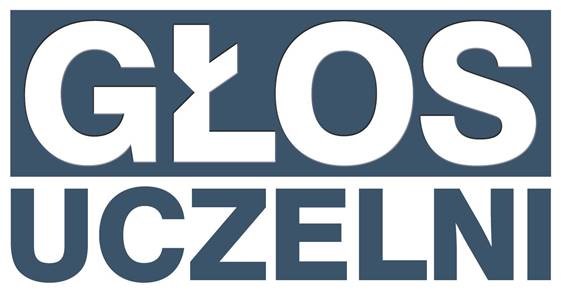
Research papers of the month – July 2024
We present the highest-score research papers of July 2024. These papers have ben published in journals with the highest Ministerial score – 200 points.
Shaping the bioactive potential, health-promoting properties, and bioavailability of o/w nanoemulsions by modulating the dose of a carotenoid preparation isolated from Calendula officinalis L.
Kamil Haładyn; Aneta Wojdyło; Paulina Nowicka
Food Chemistry
Ministerial score = 200.0
Journal Impact Factor (2023) = 8.5 (Q1)
The use of nanotechnology in food production (in particular protein base nanoemulsion) is a solution that is gaining popularity, which allows to design of smart food with targeted health-promoting properties. This study aimed to assess the impact of the dose of the phytochemical extract (1%; 3%; 5% w/w) comprising isolated lipophilic compounds from Calendula officinalis L. on selected physicochemical properties of the emulsion, antioxidant, antidiabetic and antiaging effects, and its impact on carotenoids content and their in vitro bioavailability. The results showed that the use of a 3% extract dosage appears to be optimal for obtaining a nanoemulsion. This variant was characterized by the highest antidiabetic activity and there was no overloading of the nanostructure. Additionally, the use of a pea protein - lipophilic compounds - sunflower/hemp oil matrix to create nanoforms seems to be a promising solution in the context of pro-health properties and bioavailability of bioactive compounds.
DOI:10.1016/j.foodchem.2024.139990
Machine Learning-Based Wet Refractivity Prediction Through GNSS Troposphere Tomography for Ensemble Troposphere Conditions Forecasting
Saeid Haji‑Aghajany; Witold Rohm; Ryszard Kryza; Kamil Smolak
IEEE Transactions on Geoscience and Remote Sensing
Ministerial score = 200.0
Journal Impact Factor (2023) = 7.5 (Q1)
This article introduces an innovative ensemble troposphere conditions forecasting method using wet refractivity within the context of Global Navigation Satellite System (GNSS) troposphere tomography. The current models lack coverage of diverse geographical locations and weather conditions, and they do not utilize high-spatial resolution tropospheric data to cover a large area. Moreover, their deterministic prediction mode may introduce high uncertainty into the results. This article leverages long short-term memory (LSTM) networks and genetic algorithms (GAs) to optimize hyperparameters, enabling the prediction of 3-D wet refractivity fields for ensemble forecasting under various weather conditions including rain bands sweeping in Poland and a storm in California, USA. A comparison of the 3-h predictions with Weather Research and Forecasting (WRF) model outputs at levels with a height lower than 3000 m shows root-mean-squared error (RMSE) values of 4.15 and 3.18 ppm for Poland and California, respectively. After utilizing the generative adversarial network (GAN) to produce realistic time series, ensemble forecasting is conducted. The model demonstrates exceptional accuracy in both regions, yielding an optimal threshold of 0.41, which shows a point at which the balance between true positive (TP) and true negative (TN) instances is optimized, achieving a sensitivity of 0.967 and a precision of 0.973 in Poland. Additionally, it achieves an optimal threshold of 0.52, yielding a sensitivity of 0.982 and a precision of 0.993 in California. The low false positive rate (FPR) of 0.027 in Poland and 0.011 in California underscore the adaptability and reliability of the model across diverse datasets.
DOI:10.1109/TGRS.2024.3417487
Organic carbon in Mollisols of the world − A review
Beata Łabaz; Alfred E. Hartemink; Yakun Zhang; Annalisa Stevenson; Cezary Kabała
Geoderma
Ministerial score = 200.0
Journal Impact Factor (2023) = 5.6 (Q1)
Mollisols represent 29 % of agricultural land and they are considered to be one of the most fertile soils in the world. Here, we compare soil organic carbon (SOC) concentrations and pools of Mollisols for the globe, the USA and Poland, and review how differences are caused by climate, land use, and key environmental factors. Globally, the mean thickness of the A horizon in Mollisols is 50 cm. At 0–30 cm the mean SOC concentration is 2.3 %, SOC pool is 84 t ha−1, and clay content calculated at 0–50 cm soil depth is 21 %. Mollisols in the USA have an A horizon thickness of 36 cm and have a mean clay content of 27 % (0–50 cm). SOC concentrations are 2.0 and 1.7 % and SOC pools are 85 and 116 t ha−1 at 0–30 and 0–50 cm soil depth, respectively. Mollisols in Poland have SOC concentrations of 1.8 and 1.5 % at 0–30 and 0–50 cm soil depth, respectively, and lower clay content (17 %) at 0–50 cm depth. The SOC pool at 0–30 cm depth is 74 t ha−1 whereas it is 106 t ha−1 at 0–50 cm. At the global scale, the highest SOC concentrations and pools are in Mollisols from Eastern Europe (including Ukraine and Western Russia) and Asia, while the lowest SOC pools are found in Mollisols from South America. The Mollisols in Western and Central Europe and North America have similar SOC pools, although Mollisols in North America have higher SOC concentrations and lower A horizon thickness. Globally, the mean pH value of Mollisols is 7.1, and the pH is slightly lower in Mollisols of the USA (6.9 ± 0.9). The SOC concentrations and pools are strongly and positively correlated with clay content. Soil moisture and temperature regimes determine SOC concentration and pools in Mollisols, and higher SOC concentrations and pools are in Mollisols with frigid and frigid-cryic soil temperature regimes as well as aquic, xeric, and aridic soil moisture regimes. Mollisols under grassland have the largest SOC pools compared to those cultivated or under forest. The important environmental factors on SOC concentrations and pools in Mollisols worldwide are soil texture, land use, and soil temperature regime.
DOI:10.1016/j.geoderma.2024.116937
ECEIM consensus statement on equine kidney disease
Gaby van Galen; Thomas J. Divers; Victoria Savage; Harold C. Schott; Natalia Siwińska
Journal of Veterinary Internal Medicine
Ministerial score = 200.0
Journal Impact Factor (2023) = 2.1 (Q1)
The aim of this consensus statement is to summarize and appraise scientific evidence and combine this with the clinical experience of a panel of experts to optimize recommendations on how to recognize and manage kidney disease in horses.
DOI:10.1111/jvim.17101
Application of triple-branch artificial neural network system for catalytic pellets combustion
Karol Postawa; Błażej Gaze; Bernard Knutel; Marek Kułażyński
Journal of Environmental Management
Ministerial score = 200.0
Journal Impact Factor (2023) = 8.0 (Q1)
On the international level, it is common to act on reducing emissions from energy systems. However, in addition to industrial emissions, low-stack emissions also make a significant contribution. A good step in reducing its environmental impact, is to move to biofuels, including biomass. This paper examines the impact of placing a catalytic system in a retort boiler to minimize emissions of greenhouse gases, dust and other pollutants when burning pellets. The effect of platinum, and oxides of selected metals placed on the deflector as a solid catalyst was studied. Based on the experimental data, a branched artificial neural network was constructed and trained. The routing of three parallel topologies made it possible to achieve high accuracy while keeping the input data relatively simple. The system showed an average error of 3.54% against arbitrary test data. On the basis of experimental data as well as predictions returned by the artificial neural network, recommendations were shown for the catalysts used and their amounts. Depending on the biomass from which the pellet was produced, the experiment suggested the use of titanium or copper oxides. In the case of the neural network, it was able to select a better system, based on platinum, improving emission reductions by up to more than 19%, depending on the type of pellet used.
DOI:10.1016/j.jenvman.2024.121678
Fertility and quality of arable soils in Poland: spatial–temporal analysis of long-term monitoring
Paweł Tomczyk; Aleksandra Wdowczyk; Barbara Wiatkowska; Agata Szymańska-Pulikowska; Alban Kuriqi
Ecological Indicators
Ministerial score = 200.0
Journal Impact Factor (2023) = 7.0 (Q1)
Soil quality is a globally important issue from the point of view of food production, maintenance of appropriate environmental quality and ecological balance. Assessing its quality and fertility using indices is one of the methods that make it possible to formulate recommendations for good soil management. The aim of the study was, therefore, to determine the spatial and temporal distribution of soil properties in the context of soil quality assessment (SQI) and soil fertility assessment (SFI, SEF, NIV, and SSFI) using the example of a Central European country (Poland). The inverse distance-weighted spatial interpolation technique was used to estimate the spatial distribution of soil quality and fertility indicators. So far, no research has been carried out that would include a comprehensive analysis of soil fertility and quality indicators in such a large research area over many years. The results of 216 points of monitoring the chemistry of arable soils in Poland from the period 1995–2020 for 28 physicochemical soil parameters were considered. The analyses carried out showed significant variability in the properties of the described soils in Poland, as evidenced by the principal component analysis (PCA) and the coefficient of variation (exceptions: bulk density, pH). It was found that heavy metals (Zn, Cd, Cu) were responsible for the deterioration of soil properties. The results obtained for different indices were different (SFI – most soils with good fertility, SEF – high fertility, NIV – soils highly enriched with nutrients, SQI – average soil quality). It was found that the SSFI is the most appropriate indicator among the analyzed indicators for Polish conditions in relation to arable soils, as it is adapted and calibrated to the specifics of this area. The Spearman correlation matrix showed that the largest group of statistically highly significant parameter pairs belonged to heavy metals (Ni/Zn, Zn/Pb, Zn/Cu, Ni/Cu). In contrast, the strongest correlations were recorded for Ni (with effective cation exchange capacity (ECEC), Mn, Mgav, Zn, Cu). The assessment revealed limiting factors and temporal trends in the overall evaluation of the quality of the country’s agricultural soils, which are important from the point of view of both sustainable development and agricultural production.
DOI:10.1016/j.ecolind.2024.112375

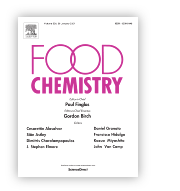 The use of nanotechnology in food production (in particular protein base nanoemulsion) is a solution that is gaining popularity, which allows to design of smart food with targeted health-promoting properties. This study aimed to assess the impact of the dose of the phytochemical extract (1%; 3%; 5% w/w) comprising isolated lipophilic compounds from Calendula officinalis L. on selected physicochemical properties of the emulsion, antioxidant, antidiabetic and antiaging effects, and its impact on carotenoids content and their in vitro bioavailability. The results showed that the use of a 3% extract dosage appears to be optimal for obtaining a nanoemulsion. This variant was characterized by the highest antidiabetic activity and there was no overloading of the nanostructure. Additionally, the use of a pea protein - lipophilic compounds - sunflower/hemp oil matrix to create nanoforms seems to be a promising solution in the context of pro-health properties and bioavailability of bioactive compounds.
The use of nanotechnology in food production (in particular protein base nanoemulsion) is a solution that is gaining popularity, which allows to design of smart food with targeted health-promoting properties. This study aimed to assess the impact of the dose of the phytochemical extract (1%; 3%; 5% w/w) comprising isolated lipophilic compounds from Calendula officinalis L. on selected physicochemical properties of the emulsion, antioxidant, antidiabetic and antiaging effects, and its impact on carotenoids content and their in vitro bioavailability. The results showed that the use of a 3% extract dosage appears to be optimal for obtaining a nanoemulsion. This variant was characterized by the highest antidiabetic activity and there was no overloading of the nanostructure. Additionally, the use of a pea protein - lipophilic compounds - sunflower/hemp oil matrix to create nanoforms seems to be a promising solution in the context of pro-health properties and bioavailability of bioactive compounds. This article introduces an innovative ensemble troposphere conditions forecasting method using wet refractivity within the context of Global Navigation Satellite System (GNSS) troposphere tomography. The current models lack coverage of diverse geographical locations and weather conditions, and they do not utilize high-spatial resolution tropospheric data to cover a large area. Moreover, their deterministic prediction mode may introduce high uncertainty into the results. This article leverages long short-term memory (LSTM) networks and genetic algorithms (GAs) to optimize hyperparameters, enabling the prediction of 3-D wet refractivity fields for ensemble forecasting under various weather conditions including rain bands sweeping in Poland and a storm in California, USA. A comparison of the 3-h predictions with Weather Research and Forecasting (WRF) model outputs at levels with a height lower than 3000 m shows root-mean-squared error (RMSE) values of 4.15 and 3.18 ppm for Poland and California, respectively. After utilizing the generative adversarial network (GAN) to produce realistic time series, ensemble forecasting is conducted. The model demonstrates exceptional accuracy in both regions, yielding an optimal threshold of 0.41, which shows a point at which the balance between true positive (TP) and true negative (TN) instances is optimized, achieving a sensitivity of 0.967 and a precision of 0.973 in Poland. Additionally, it achieves an optimal threshold of 0.52, yielding a sensitivity of 0.982 and a precision of 0.993 in California. The low false positive rate (FPR) of 0.027 in Poland and 0.011 in California underscore the adaptability and reliability of the model across diverse datasets.
This article introduces an innovative ensemble troposphere conditions forecasting method using wet refractivity within the context of Global Navigation Satellite System (GNSS) troposphere tomography. The current models lack coverage of diverse geographical locations and weather conditions, and they do not utilize high-spatial resolution tropospheric data to cover a large area. Moreover, their deterministic prediction mode may introduce high uncertainty into the results. This article leverages long short-term memory (LSTM) networks and genetic algorithms (GAs) to optimize hyperparameters, enabling the prediction of 3-D wet refractivity fields for ensemble forecasting under various weather conditions including rain bands sweeping in Poland and a storm in California, USA. A comparison of the 3-h predictions with Weather Research and Forecasting (WRF) model outputs at levels with a height lower than 3000 m shows root-mean-squared error (RMSE) values of 4.15 and 3.18 ppm for Poland and California, respectively. After utilizing the generative adversarial network (GAN) to produce realistic time series, ensemble forecasting is conducted. The model demonstrates exceptional accuracy in both regions, yielding an optimal threshold of 0.41, which shows a point at which the balance between true positive (TP) and true negative (TN) instances is optimized, achieving a sensitivity of 0.967 and a precision of 0.973 in Poland. Additionally, it achieves an optimal threshold of 0.52, yielding a sensitivity of 0.982 and a precision of 0.993 in California. The low false positive rate (FPR) of 0.027 in Poland and 0.011 in California underscore the adaptability and reliability of the model across diverse datasets.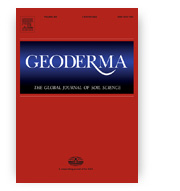 Mollisols represent 29 % of agricultural land and they are considered to be one of the most fertile soils in the world. Here, we compare soil organic carbon (SOC) concentrations and pools of Mollisols for the globe, the USA and Poland, and review how differences are caused by climate, land use, and key environmental factors. Globally, the mean thickness of the A horizon in Mollisols is 50 cm. At 0–30 cm the mean SOC concentration is 2.3 %, SOC pool is 84 t ha−1, and clay content calculated at 0–50 cm soil depth is 21 %. Mollisols in the USA have an A horizon thickness of 36 cm and have a mean clay content of 27 % (0–50 cm). SOC concentrations are 2.0 and 1.7 % and SOC pools are 85 and 116 t ha−1 at 0–30 and 0–50 cm soil depth, respectively. Mollisols in Poland have SOC concentrations of 1.8 and 1.5 % at 0–30 and 0–50 cm soil depth, respectively, and lower clay content (17 %) at 0–50 cm depth. The SOC pool at 0–30 cm depth is 74 t ha−1 whereas it is 106 t ha−1 at 0–50 cm. At the global scale, the highest SOC concentrations and pools are in Mollisols from Eastern Europe (including Ukraine and Western Russia) and Asia, while the lowest SOC pools are found in Mollisols from South America. The Mollisols in Western and Central Europe and North America have similar SOC pools, although Mollisols in North America have higher SOC concentrations and lower A horizon thickness. Globally, the mean pH value of Mollisols is 7.1, and the pH is slightly lower in Mollisols of the USA (6.9 ± 0.9). The SOC concentrations and pools are strongly and positively correlated with clay content. Soil moisture and temperature regimes determine SOC concentration and pools in Mollisols, and higher SOC concentrations and pools are in Mollisols with frigid and frigid-cryic soil temperature regimes as well as aquic, xeric, and aridic soil moisture regimes. Mollisols under grassland have the largest SOC pools compared to those cultivated or under forest. The important environmental factors on SOC concentrations and pools in Mollisols worldwide are soil texture, land use, and soil temperature regime.
Mollisols represent 29 % of agricultural land and they are considered to be one of the most fertile soils in the world. Here, we compare soil organic carbon (SOC) concentrations and pools of Mollisols for the globe, the USA and Poland, and review how differences are caused by climate, land use, and key environmental factors. Globally, the mean thickness of the A horizon in Mollisols is 50 cm. At 0–30 cm the mean SOC concentration is 2.3 %, SOC pool is 84 t ha−1, and clay content calculated at 0–50 cm soil depth is 21 %. Mollisols in the USA have an A horizon thickness of 36 cm and have a mean clay content of 27 % (0–50 cm). SOC concentrations are 2.0 and 1.7 % and SOC pools are 85 and 116 t ha−1 at 0–30 and 0–50 cm soil depth, respectively. Mollisols in Poland have SOC concentrations of 1.8 and 1.5 % at 0–30 and 0–50 cm soil depth, respectively, and lower clay content (17 %) at 0–50 cm depth. The SOC pool at 0–30 cm depth is 74 t ha−1 whereas it is 106 t ha−1 at 0–50 cm. At the global scale, the highest SOC concentrations and pools are in Mollisols from Eastern Europe (including Ukraine and Western Russia) and Asia, while the lowest SOC pools are found in Mollisols from South America. The Mollisols in Western and Central Europe and North America have similar SOC pools, although Mollisols in North America have higher SOC concentrations and lower A horizon thickness. Globally, the mean pH value of Mollisols is 7.1, and the pH is slightly lower in Mollisols of the USA (6.9 ± 0.9). The SOC concentrations and pools are strongly and positively correlated with clay content. Soil moisture and temperature regimes determine SOC concentration and pools in Mollisols, and higher SOC concentrations and pools are in Mollisols with frigid and frigid-cryic soil temperature regimes as well as aquic, xeric, and aridic soil moisture regimes. Mollisols under grassland have the largest SOC pools compared to those cultivated or under forest. The important environmental factors on SOC concentrations and pools in Mollisols worldwide are soil texture, land use, and soil temperature regime. The aim of this consensus statement is to summarize and appraise scientific evidence and combine this with the clinical experience of a panel of experts to optimize recommendations on how to recognize and manage kidney disease in horses.
The aim of this consensus statement is to summarize and appraise scientific evidence and combine this with the clinical experience of a panel of experts to optimize recommendations on how to recognize and manage kidney disease in horses.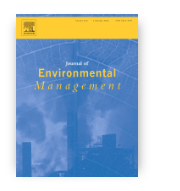 On the international level, it is common to act on reducing emissions from energy systems. However, in addition to industrial emissions, low-stack emissions also make a significant contribution. A good step in reducing its environmental impact, is to move to biofuels, including biomass. This paper examines the impact of placing a catalytic system in a retort boiler to minimize emissions of greenhouse gases, dust and other pollutants when burning pellets. The effect of platinum, and oxides of selected metals placed on the deflector as a solid catalyst was studied. Based on the experimental data, a branched artificial neural network was constructed and trained. The routing of three parallel topologies made it possible to achieve high accuracy while keeping the input data relatively simple. The system showed an average error of 3.54% against arbitrary test data. On the basis of experimental data as well as predictions returned by the artificial neural network, recommendations were shown for the catalysts used and their amounts. Depending on the biomass from which the pellet was produced, the experiment suggested the use of titanium or copper oxides. In the case of the neural network, it was able to select a better system, based on platinum, improving emission reductions by up to more than 19%, depending on the type of pellet used.
On the international level, it is common to act on reducing emissions from energy systems. However, in addition to industrial emissions, low-stack emissions also make a significant contribution. A good step in reducing its environmental impact, is to move to biofuels, including biomass. This paper examines the impact of placing a catalytic system in a retort boiler to minimize emissions of greenhouse gases, dust and other pollutants when burning pellets. The effect of platinum, and oxides of selected metals placed on the deflector as a solid catalyst was studied. Based on the experimental data, a branched artificial neural network was constructed and trained. The routing of three parallel topologies made it possible to achieve high accuracy while keeping the input data relatively simple. The system showed an average error of 3.54% against arbitrary test data. On the basis of experimental data as well as predictions returned by the artificial neural network, recommendations were shown for the catalysts used and their amounts. Depending on the biomass from which the pellet was produced, the experiment suggested the use of titanium or copper oxides. In the case of the neural network, it was able to select a better system, based on platinum, improving emission reductions by up to more than 19%, depending on the type of pellet used.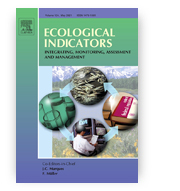 Soil quality is a globally important issue from the point of view of food production, maintenance of appropriate environmental quality and ecological balance. Assessing its quality and fertility using indices is one of the methods that make it possible to formulate recommendations for good soil management. The aim of the study was, therefore, to determine the spatial and temporal distribution of soil properties in the context of soil quality assessment (SQI) and soil fertility assessment (SFI, SEF, NIV, and SSFI) using the example of a Central European country (Poland). The inverse distance-weighted spatial interpolation technique was used to estimate the spatial distribution of soil quality and fertility indicators. So far, no research has been carried out that would include a comprehensive analysis of soil fertility and quality indicators in such a large research area over many years. The results of 216 points of monitoring the chemistry of arable soils in Poland from the period 1995–2020 for 28 physicochemical soil parameters were considered. The analyses carried out showed significant variability in the properties of the described soils in Poland, as evidenced by the principal component analysis (PCA) and the coefficient of variation (exceptions: bulk density, pH). It was found that heavy metals (Zn, Cd, Cu) were responsible for the deterioration of soil properties. The results obtained for different indices were different (SFI – most soils with good fertility, SEF – high fertility, NIV – soils highly enriched with nutrients, SQI – average soil quality). It was found that the SSFI is the most appropriate indicator among the analyzed indicators for Polish conditions in relation to arable soils, as it is adapted and calibrated to the specifics of this area. The Spearman correlation matrix showed that the largest group of statistically highly significant parameter pairs belonged to heavy metals (Ni/Zn, Zn/Pb, Zn/Cu, Ni/Cu). In contrast, the strongest correlations were recorded for Ni (with effective cation exchange capacity (ECEC), Mn, Mgav, Zn, Cu). The assessment revealed limiting factors and temporal trends in the overall evaluation of the quality of the country’s agricultural soils, which are important from the point of view of both sustainable development and agricultural production.
Soil quality is a globally important issue from the point of view of food production, maintenance of appropriate environmental quality and ecological balance. Assessing its quality and fertility using indices is one of the methods that make it possible to formulate recommendations for good soil management. The aim of the study was, therefore, to determine the spatial and temporal distribution of soil properties in the context of soil quality assessment (SQI) and soil fertility assessment (SFI, SEF, NIV, and SSFI) using the example of a Central European country (Poland). The inverse distance-weighted spatial interpolation technique was used to estimate the spatial distribution of soil quality and fertility indicators. So far, no research has been carried out that would include a comprehensive analysis of soil fertility and quality indicators in such a large research area over many years. The results of 216 points of monitoring the chemistry of arable soils in Poland from the period 1995–2020 for 28 physicochemical soil parameters were considered. The analyses carried out showed significant variability in the properties of the described soils in Poland, as evidenced by the principal component analysis (PCA) and the coefficient of variation (exceptions: bulk density, pH). It was found that heavy metals (Zn, Cd, Cu) were responsible for the deterioration of soil properties. The results obtained for different indices were different (SFI – most soils with good fertility, SEF – high fertility, NIV – soils highly enriched with nutrients, SQI – average soil quality). It was found that the SSFI is the most appropriate indicator among the analyzed indicators for Polish conditions in relation to arable soils, as it is adapted and calibrated to the specifics of this area. The Spearman correlation matrix showed that the largest group of statistically highly significant parameter pairs belonged to heavy metals (Ni/Zn, Zn/Pb, Zn/Cu, Ni/Cu). In contrast, the strongest correlations were recorded for Ni (with effective cation exchange capacity (ECEC), Mn, Mgav, Zn, Cu). The assessment revealed limiting factors and temporal trends in the overall evaluation of the quality of the country’s agricultural soils, which are important from the point of view of both sustainable development and agricultural production.